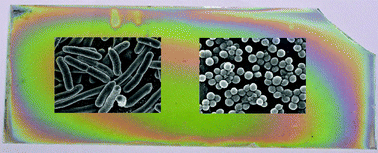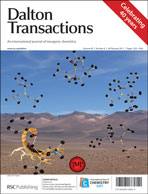Nitrogen-doped TiO2 thin films: photocatalytic applications for healthcare environments
Abstract
N-doped TiO2 has for many years received interest as visible light photocatalytic materials. Here we give our perspective on the subject with special consideration towards the use of visible light photocatalysts in the field of antimicrobial materials with applications in healthcare environments. The subject is reviewed and critiqued from synthetic techniques to characterisation and assessment of functional properties. N-doped TiO2 has huge potential to form commercially viable antimicrobial surfaces that are easily implemented within the healthcare environment. We aim to shed light on the illusive nature of the mechanism of the different types of N-doping and comment on how these affect the properties of the


 Please wait while we load your content...
Please wait while we load your content...